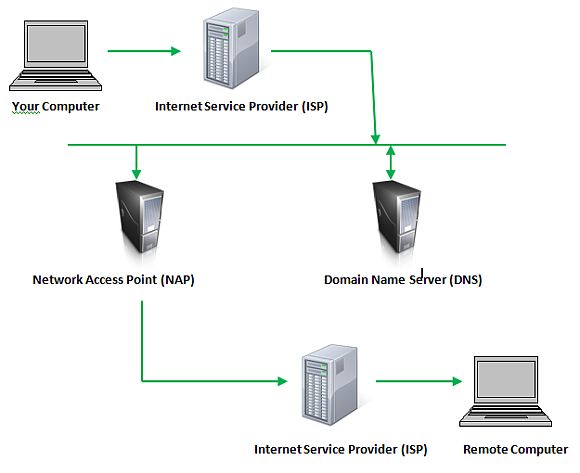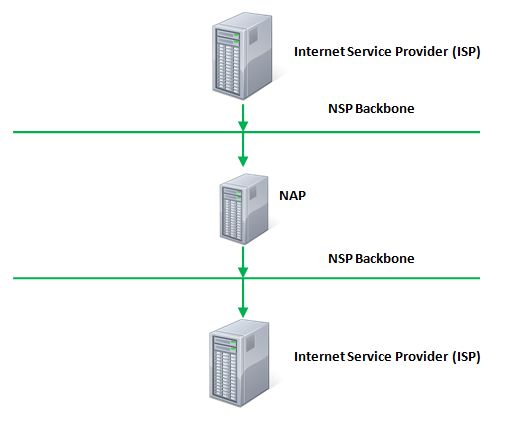Internet & World Wide Web Are Not The Same Thing
The two terms “
Internet” and “
World Wide Web” have been used interchangeably ever since the Internet itself became a household “utility” as common as electricity or cable TV. People talk about “surfing the web” and “searching the Internet” like the two terms are one and the same.
Are you one of those people? It may be surprising for a lot of people to learn that the basic foundation of the two terms are very distinct. They were defined at a time when the Internet was first being formed, and despite the fact that people use them to refer to the same thing, they are actually very different pieces of the overall network we call the World Wide Web.
Internet vs. World Wide Web
So, basically, picture the global network we know as the Internet as made up of two layers. Picture a “solid” layer made up of all of the wires, servers, routers, switches, computers and everything else that makes up the physical networks across the entire world. That’s what we’ll call the “Internet”.
How The Internet is Designed
Here’s the Reader’s Digest version of how the Internet came to be. The Internet was an infrastructure with a foundation going as far back as 1969 and the U.S. DoD’s Advanced Research Project Agency’s effort to create a strong communication network in case of war. This physical network connected critical Universities working on Defense projects with government and military departments. Eventually “ARPAnet” grew and transformed into the impressive system that we now know today as the “Internet”.
The World Wide Web, on the other hand, is the brains of the whole thing. Take all of that hardware and infrastructure and picture installing software onto those servers and computers. These would include Internet browsers and other software that can communicate via the TCP/IP protocol that everything connected to the Internet uses to “talk”.

These days, you’re not just talking computers and web browsers. People now physically connect to the Internet with devices like tablets, smartphones, music devices, game stations, cable TV devices and even things like digital photo frames and digital cameras. Lots of devices are becoming “internet-enabled”, giving those devices the ability to connect to that massive Internet infrastructure through your home “access point”.
So, how does that all work? There you are with your tablet or laptop and you’re typing “www.google.com” into the web browser. Once you hit “enter”, you are requesting information from the World Wide Web – the software-based web of connections and information. The flow of your traffic once you hit the enter key looks like this.

From your computer, your request goes out of your router and to your ISP (Internet Service Provider). The traffic for that URL is directed based on the configuration of DNS servers in your area. Every registered domain is listed in DNS servers around the world – the entire purpose of those servers is to provide the IP address where information (web pages) are stored. The DNS server reports back with the IP information, so now the ISP knows where to go to retrieve the web page you’ve requested.
The traffic flows through Network Service Provider networks (NSP), which include networks like SprintNet, IBM, PSINet, etc. These are the major Internet backbone networks. If you could watch your packets of information flowing through the Internet like a river, you’d see that traffic arrive at your nearest NSP before slipping through sort of virtual “doorways” known as “Network Access Points” (NAP) that allow your packet to leap from one NSP to another.

Eventually, your request makes it to the remote computer – in this case a web server – which will reply to your request by serving up the web page. That traffic flows back across the Internet in the same manner. All of this happens lightning-fast, in the blink of an eye.
How The World Wide Web Is Designed
So, that is an explanation of how the Internet works, but that is only scratching the very surface when it comes to the World Wide Web. The WWW is not really limited to the structure of how hardware or network wires are laid out. The web is quite literally a web of links – online connections to pages, files, music, media, video, downloads and just about anything else that might be stored on a server or a computer somewhere that is “plugged in” to the massive physical network known as the “Internet”.

Picture every web page stored on a server as one “node” that can contain a long list of links to many other nodes on this massive network. Every link can be to absolutely any single piece of information – text, media and more – that is connected to the Internet. It is the interconnection of all of those links that forms what is known as the “World Wide Web”. It is specifically a web of links that forms this virtual online maze of information – a web that continues to grow and multiply at a pace that is far more rapid than the physical growth of the Internet itself.
So, the next time someone uses the terms “Internet” and “World Wide Web” as though they’re the same thing, you don’t really have to correct them. However, you can rest assured in your own knowledge that the Internet applies to the physical infrastructure – the interconnected devices of the net – while the “World Wide Web” applies to the web of software links that connect together the information stored on that massive network.
Together – the two things form the massive network that has transformed our world, and has connected every one of us in ways that never would have been possible without it. The two parts of the network are critical. They aren’t the same, but they both serve an important role in making the whole thing work.



